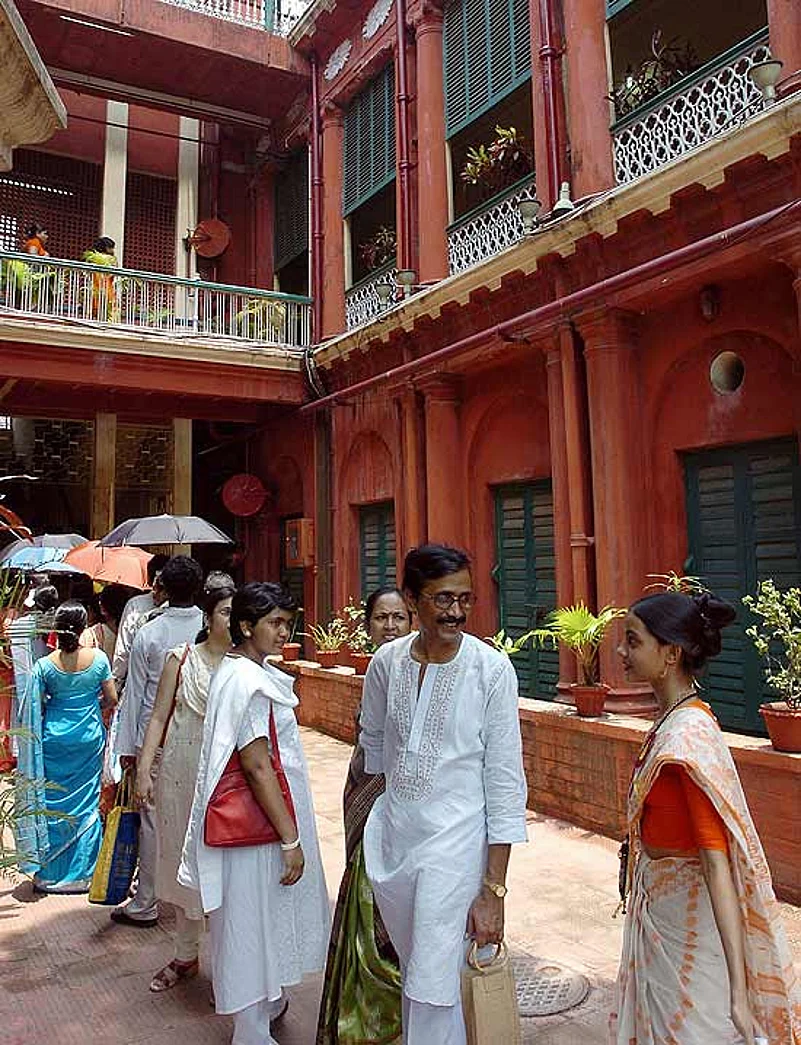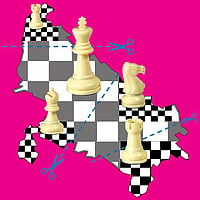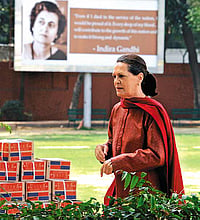This is a novel about the house that spawned thousands of stories, poems, plays, novels, articles, paintings and sketches. It narrates almost half a century in the life of the Tagore family of Jorasanko in north Calcutta. In these years, they catalyse changes in 19th century Bengal and, while contributing to the wider cultural renaissance, indulge in intrigue, begin adulterous relations and set one against the other—like any feudal family in decline.
Chakravarti had a daunting task—the first being that the work should read like a novel and not history. While remaining truthful to actual events, she weaves a tale around her select cast of characters.
Despite the fact that the Tagores are considered the first family of Bengal, pre-eminent as far as culture in 19th and early 20th centuries is concerned, Joransanko is not a cultural chronicle. The vast and varied oeuvres of art, literature and music the Tagores spawned are incidental to Chakravarti’s tale. Her focus is on life and human characteristics, with all its frailties.
Though prominent women of the family occupy centrestage, the illustrious men hardly have marginal roles. This makes the canvas of Jorasanko a very wide one; rather than a protagonist-driven tale, Chakravarti propels her narrative through numerous vignettes.
For people unaware of the richness (material, cultural, spiritual) of the Tagore family, Jorasanko is synonymous with Rabindranath Tagore, the greatest of many multi-talented members. But in Jorasanko, ‘Robi’ makes a late entrance and, though remaining an integral character, is not overly lionised. In fact, the many contradictions between the writer’s public image and the person are neatly delineated. His one persona is modern, even reformist—in favour of widow remarriage and against child marriage, while the other is that of a conservative patriarch of his nuclear family.
Jorasanko retains the flavour of stately Bengali prose and follows the structure of a grand opera. The relationship between Rabindranath and his early muse—Kadambari, his elder brother’s wife—which inspired Nashtanir, immortalised by Satyajit Ray in Charulata, is one of the high points of Chakravati’s tale.
Towards the end of Jorasanko, as the strands of a widely cast narrative arc narrows down, I wondered how it would all end. Chakravarti chooses a good juncture to bow out—the death of Mrinalini, the poet’s wife, the ‘salt-of-the-earth’ for Rabindranath. Life in the Jorasanko thakurbari went on after this closure—a mine for future writers to excavate.


























